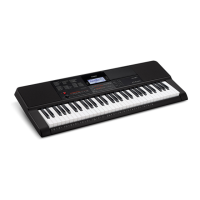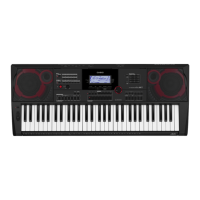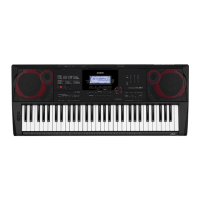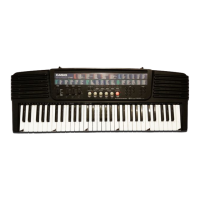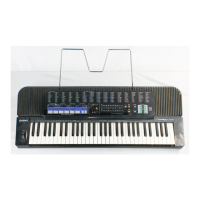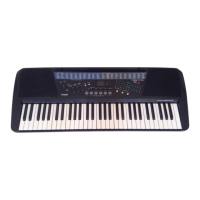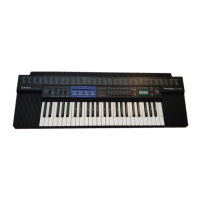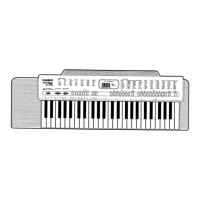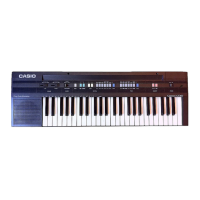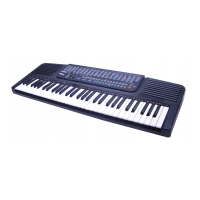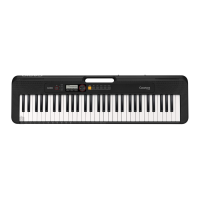EN-54
• With some music presets, selecting a number in step 3
causes the [SYNC START] indicator to start to flash,
indicating that the Digital Keyboard is in synchro start
standby (page EN-48). If this happens, Auto
Accompaniment can be started by playing something on
the keyboard instead of pressing ck START/STOP. For
information about operations that can be performed while in
synchro start standby, see step 1 under “To use Synchro
Start to start Auto Accompaniment play” (page EN-48).
• The accompaniment pattern operations (page EN-47) can
be used during a performance with a music preset.
• The operations below cannot be used during play that
employs a music preset.
– Rhythm setting change (page EN-43)
– Synchro stop (page EN-48)
– One-Touch Preset (page EN-52)
– Registration (page EN-67)
Perform the procedure under “To configure function settings
with the bk FUNCTION button” (page EN-112) and configure
the following setting: Other (Other) 3 Music preset key
change (MP Key) (page EN-117).
Each selection of a music preset automatically changes the
Digital Keyboard settings below. Changed settings are
maintained even after the Music Preset Mode is exited.
•Tempo
• Layer (on/off)
• Split (on/off)
• do AUTO HARMONIZE/ARPEGGIATOR button
assignment
• Auto Harmonize (on/off, type)
• Arpeggiator (on/off, type)
• Arpeggiator Hold (on/off)
• Tone number (UPPER 1, LOWER 1, UPPER 2, LOWER 2
parts)
• Octave Shift (UPPER 1, LOWER 1, UPPER 2, LOWER 2
parts)
• Reverb, Chorus, Delay (on/off, type)
Short phrases can be recorded and assigned to each of the
four phrase pads. Pressing a pad will loop playback its
recorded phrase. You can sound phrases individually, or you
can sound multiple phrases at the same time.
The explanations in this section refer to phrases assigned to
the phrase pads as Phrase 1 through Phrase 4.
■ Phrase Sets and Phrase Storage Locations
A group of four phrases assigned to the four phrase pads are
called a “phrase set”. There are 25 phrase sets numbered 1
through 25, which means that up to 100 phrases (25 phrase
sets with 4 phrases each) can be stored as user phrases.
When you record a phrase, you specify a storage location
using a phrase set number (1 to 25) and a phrase number 1 to
4.
You can use the procedure below to change the phrase set
currently assigned to the phrase pads to another set.
1.
Press bk FUNCTION.
2.
Use the [1] (V) and [3] (W) bm number keys
to display “Phr Pad”, and then press [6]
(ENTER).
This displays “Phr Set”. You can select a phrase set
number at this time.
3.
Use bn [–] and [+] or the bl dial to select a
phrase set number.
4.
When the setting is the way you want, long-
press the [4] (EXIT) bm number key to exit the
setting screen.
To change the key of a chord progression
Settings Changed by Music Preset
Using Phrase Pads
Changing to Another Phrase Set
To change the phrase set
CTX5000_3000_EN.book 54 ページ 2018年2月26日 月曜日 午後3時56分
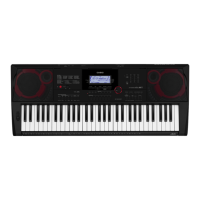
